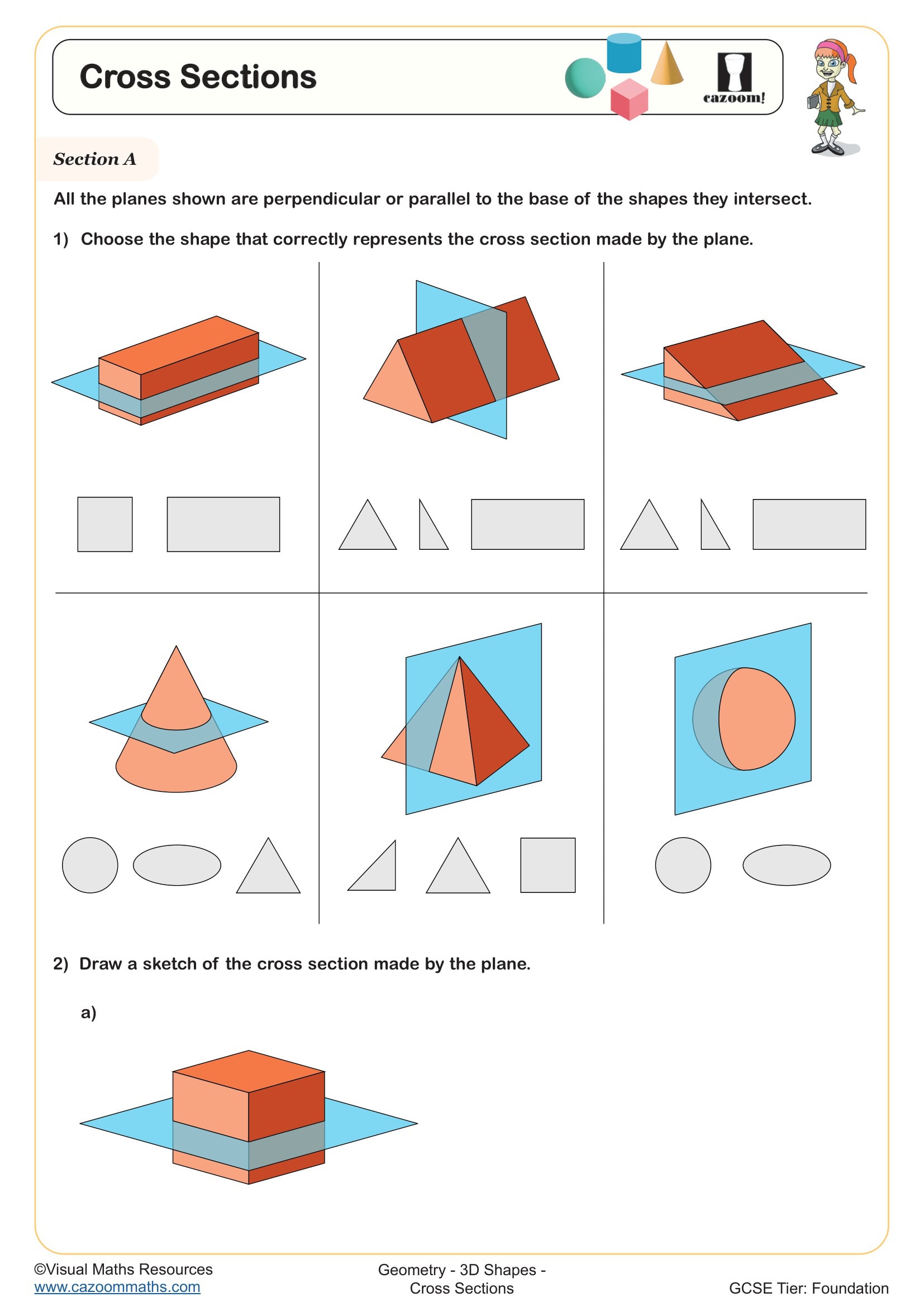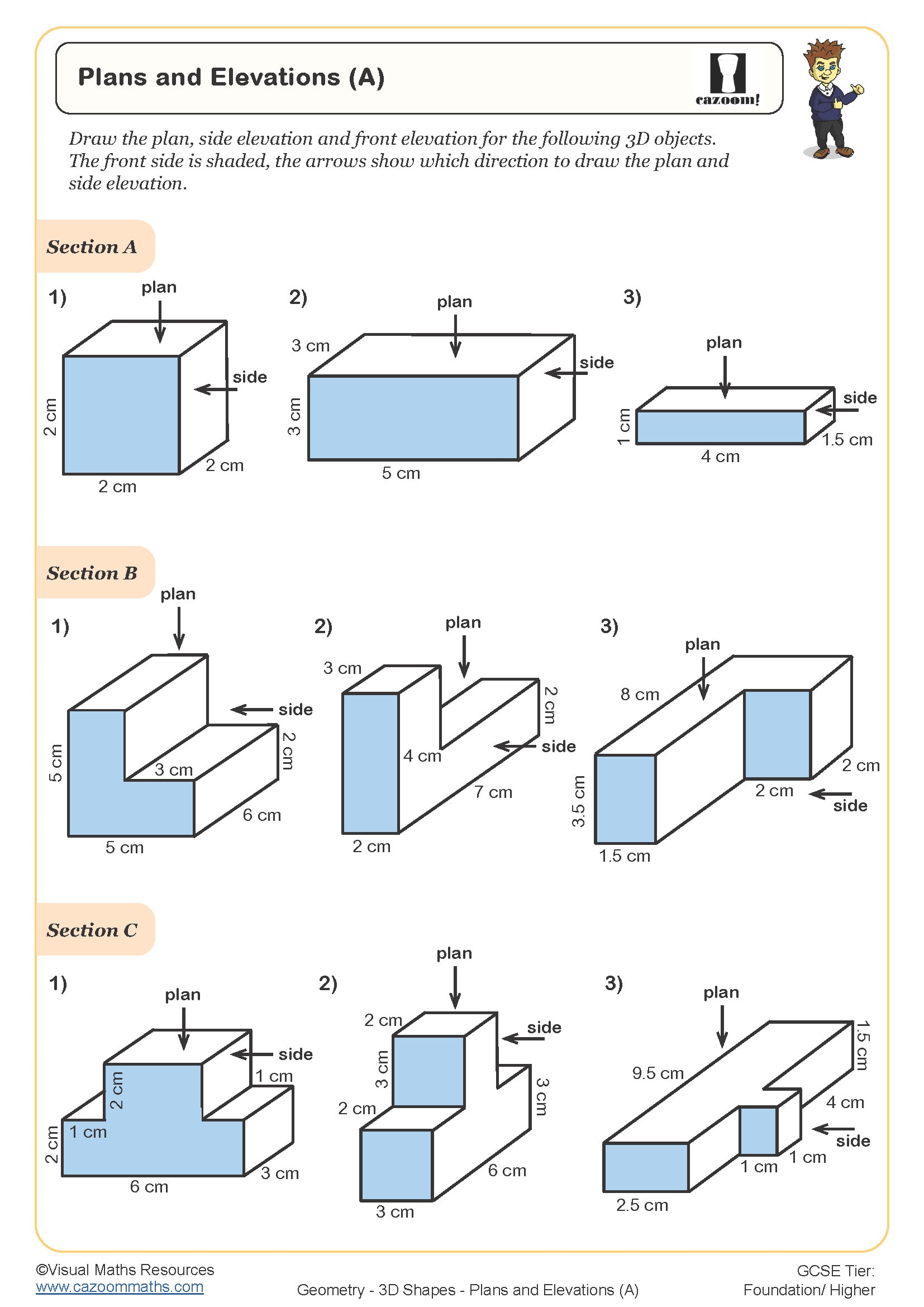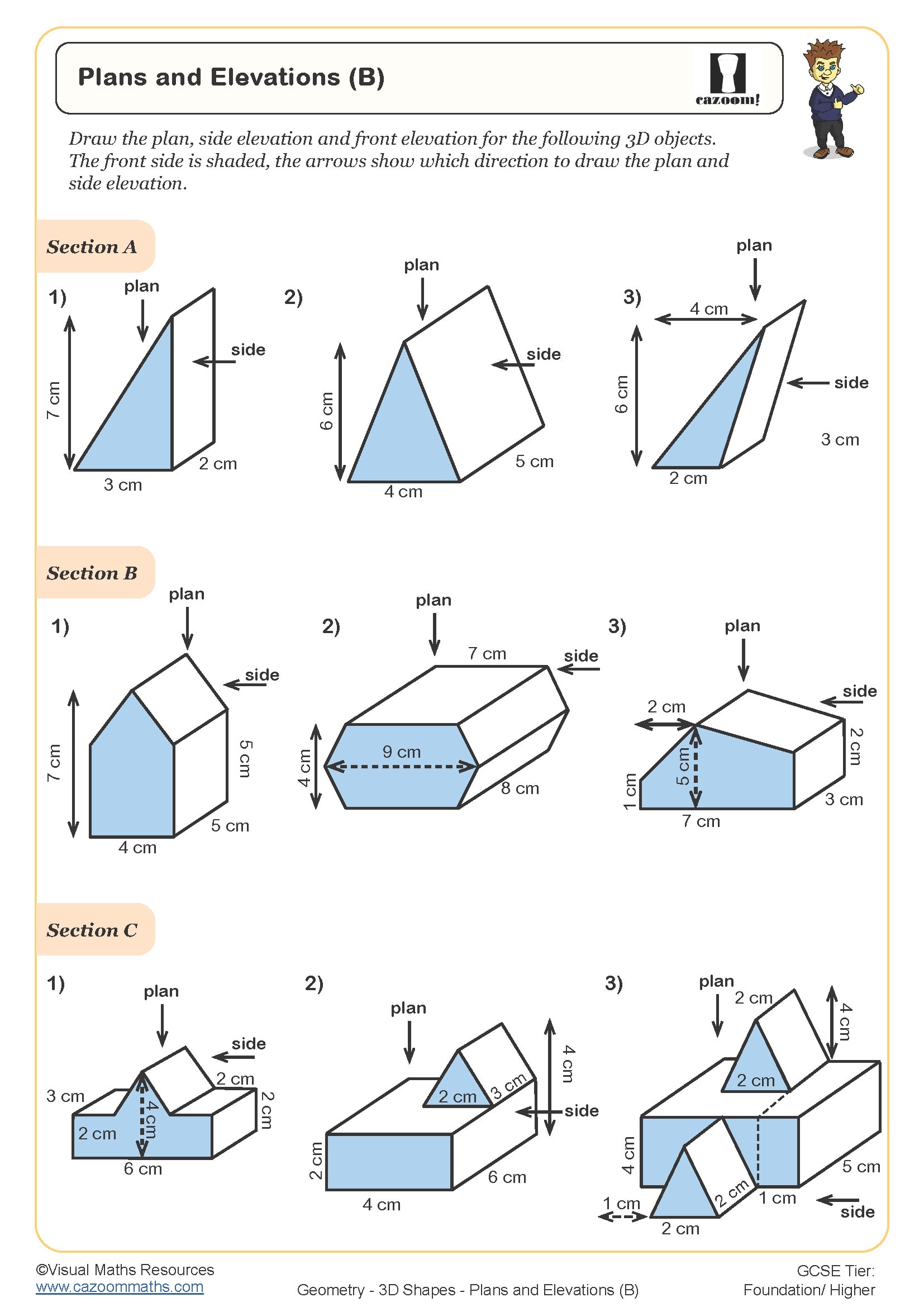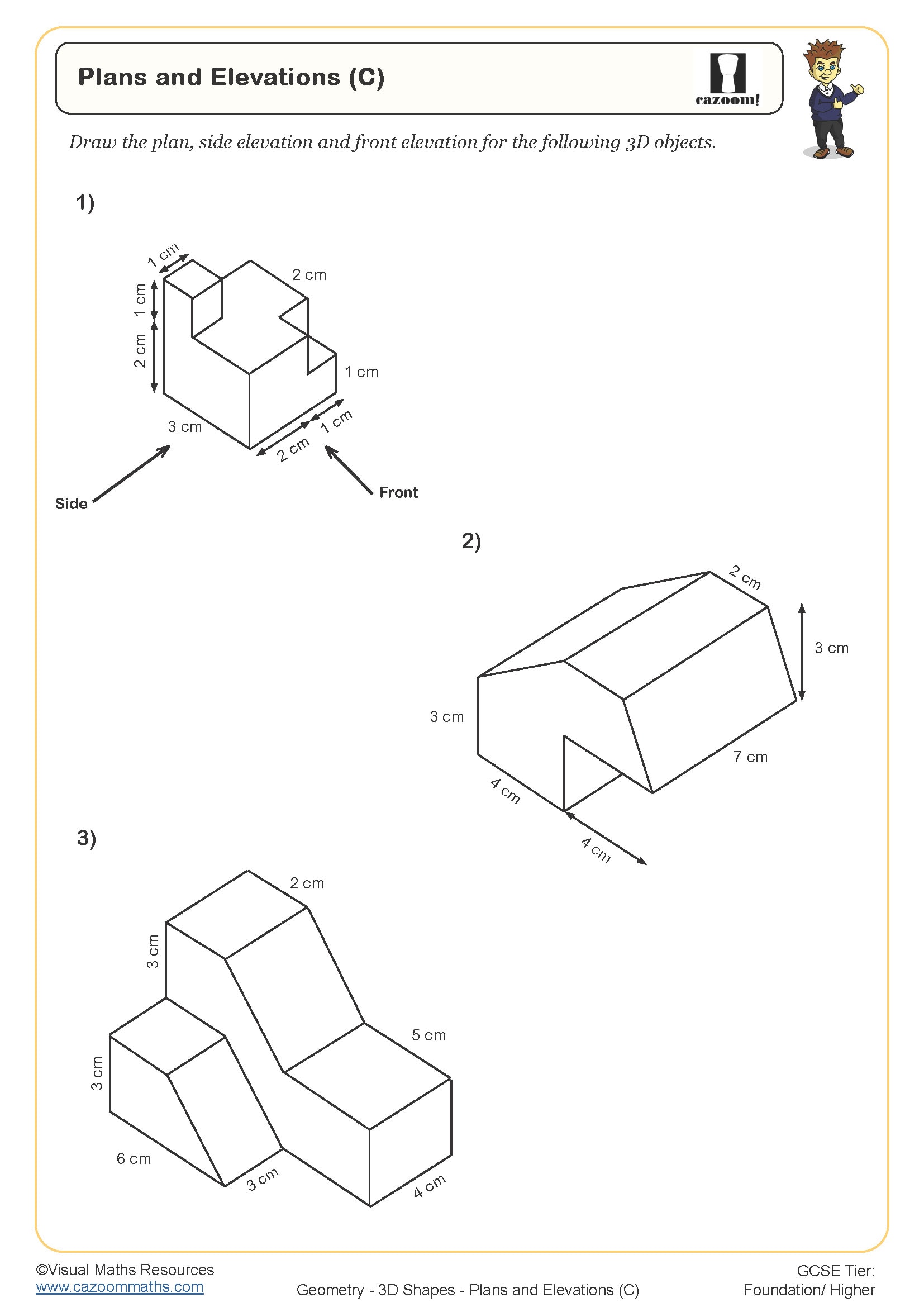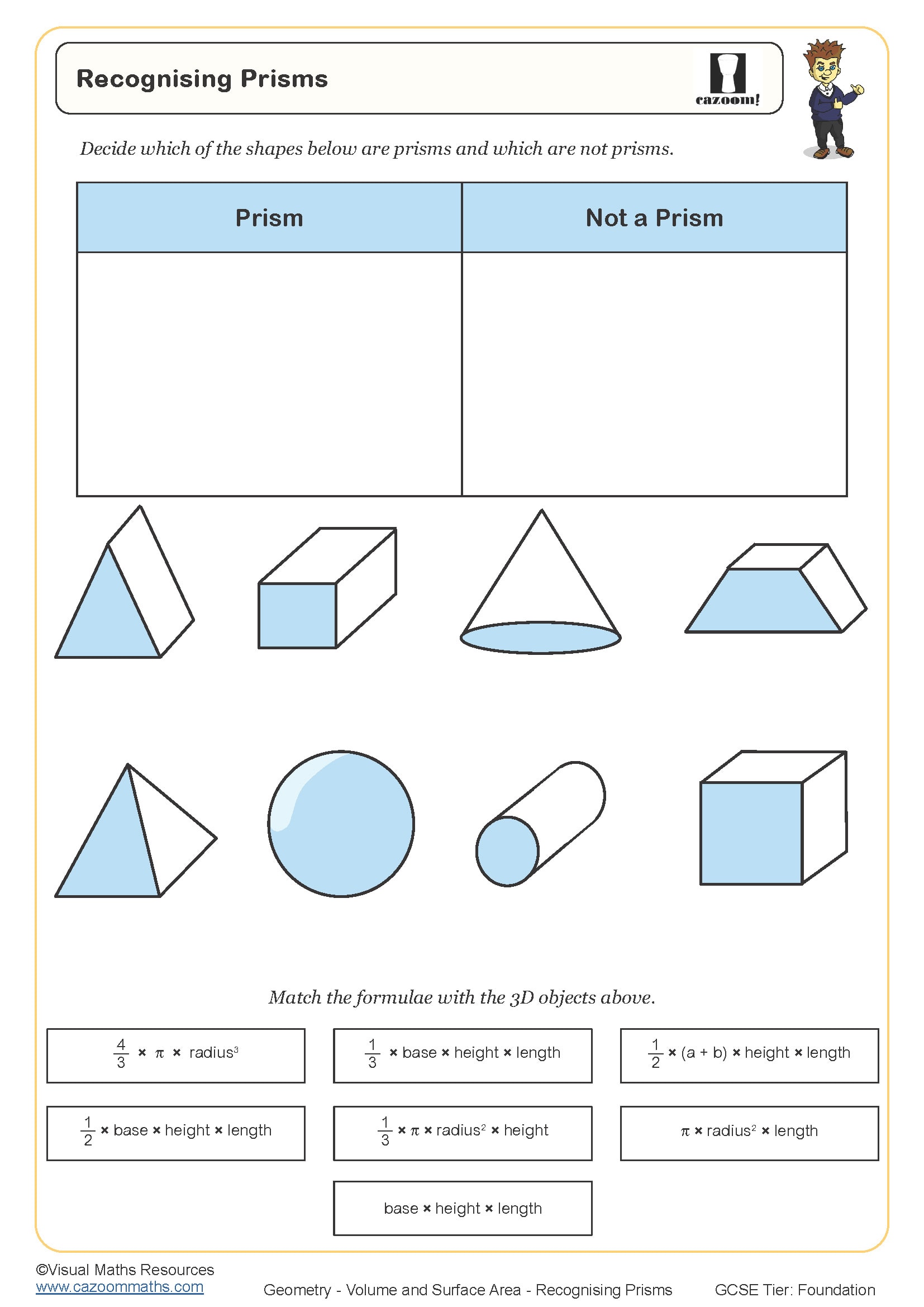Year 9 3D Shapes Worksheets
Improve Geometry Test Confidence With Our Ready-to-use Year 9 3D Shapes Worksheets
Regular engagement with three-dimensional geometry transforms abstract mathematical concepts into a tangible understanding that students can apply across multiple topic areas. The Year 9 curriculum introduces compound shapes and multi-step problems that require learners to synthesise knowledge from algebra, measurement and spatial reasoning simultaneously. Students who work through these materials systematically develop the analytical thinking patterns that distinguish strong mathematicians from those who merely memorise procedures. The progression from basic shape properties to complex volume calculations mirrors the cognitive development expected at this crucial stage. Consistent practice with varied question types ensures learners recognise underlying mathematical structures regardless of how problems are presented.
Specific learning benefits include:
• Master calculations with compound shapes
• Strengthens visualisation of hidden edges
• Develops systematic problem-solving approaches
• Builds a foundation for trigonometry topics
• Improves accuracy in scale drawing
• Connects algebraic thinking with geometry
• Enhances mathematical communication skills
Curriculum Coverage: KS3 Geometry Worksheet Topics and Skills You’ll Teach
These comprehensive resources progress from concrete representations through pictorial understanding to abstract mathematical reasoning, ensuring every learner can access the content at their current level. Each worksheet includes worked solutions demonstrating the step-by-step thinking process behind complex calculations.
The worksheets in this collection include:
• Properties of 3D Shapes — identifying vertices, edges and faces of complex solids
• Nets of 3D Shapes — constructing and interpreting two-dimensional representations of polyhedra
• Isometric Drawing — creating accurate three-dimensional representations on isometric grids
• Plans and Elevations (A) — drawing front, side and plan views of simple structures
• Plans and Elevations (B) — interpreting elevations of compound shapes made from cubes
• Volume of Compound Shapes — calculating volumes of shapes formed from multiple solids
• Surface Area of Complex Shapes — finding total surface areas including hidden faces
• 3D Pythagoras — applying Pythagoras' theorem to find diagonal lengths in solids
Support Your Child’s Learning With Year 9 3D Shapes Worksheets
Educators consistently choose these materials because they address diverse learning needs whilst maintaining rigorous mathematical standards throughout every worksheet. The visual clarity makes it easier for students to understand the material because it reduces their mental effort, allowing them to concentrate on reasoning skills instead of deciphering instructions. The natural progression of learning occurs through increasing difficulty levels within each subject, which allows students to work at their own suitable challenge points. The diagrams provide essential help to students who struggle with spatial work, and the extension questions help more advanced students reach the GCSE level. The answer sheets contain complete marking systems which show specific mistakes that need direct correction. Teachers can use time-efficient resources to free up their time for student discussions and individual support because they no longer need to create new educational materials.
From Planning to Analysis: Real-World Applications of 3D Geometry Skills
Understanding three-dimensional geometry equips students with practical skills they'll use throughout their academic careers and beyond the classroom. Architecture and engineering professionals rely on these spatial abilities when designing structures ranging from microchips to monuments.
• Calculating packaging efficiency for shipping and logistics operations
• Determining material requirements for construction and manufacturing projects
• Understanding capacity relationships in chemistry and physics experiments
• Analysing trajectory paths in sports science and biomechanics
• Creating computer graphics for the gaming and animation industries
• Planning efficient storage solutions in warehouse management
• Interpreting technical drawings in design technology courses
• Estimating quantities for catering and hospitality planning
